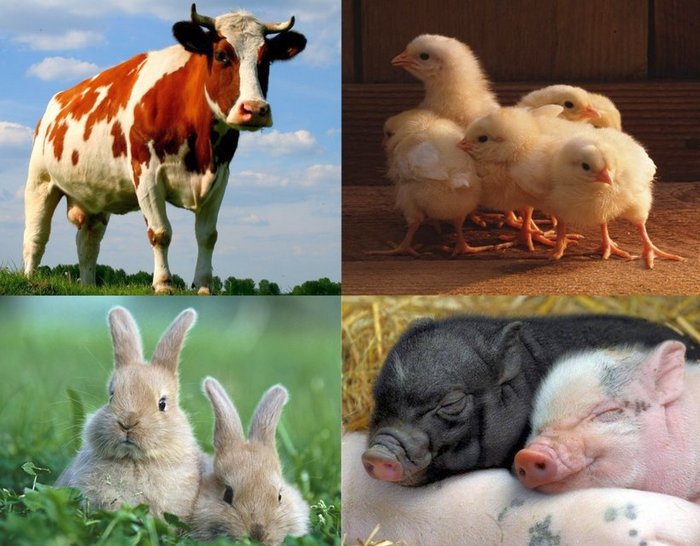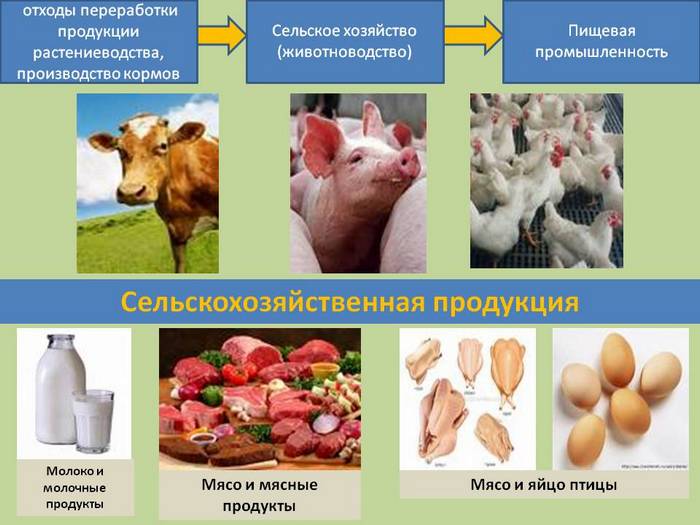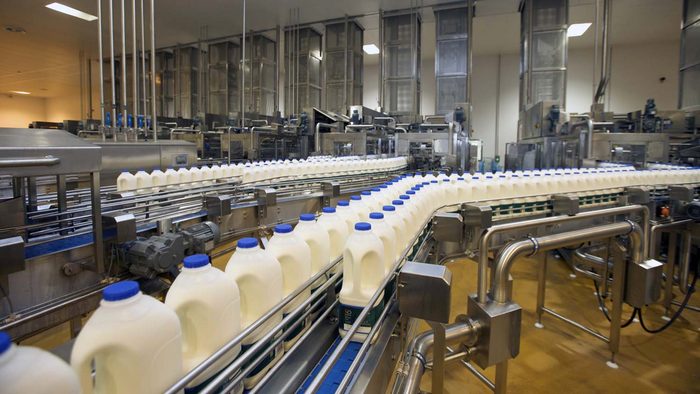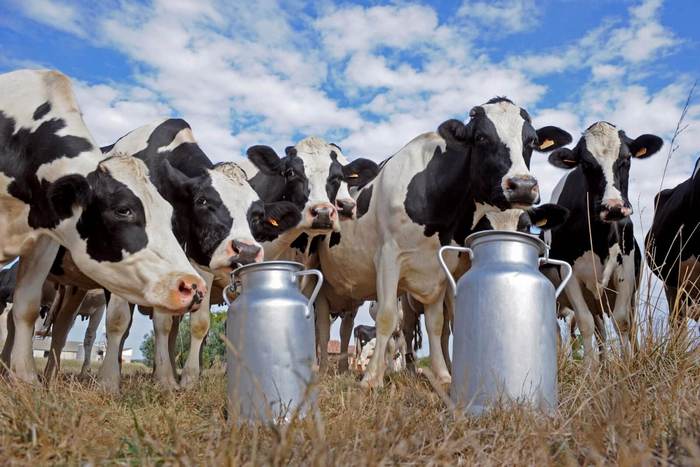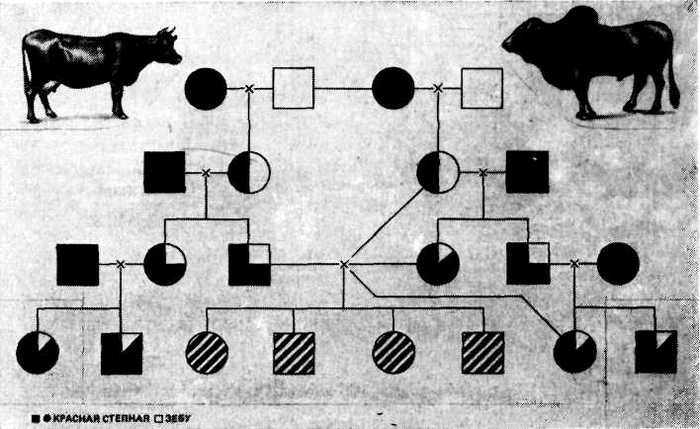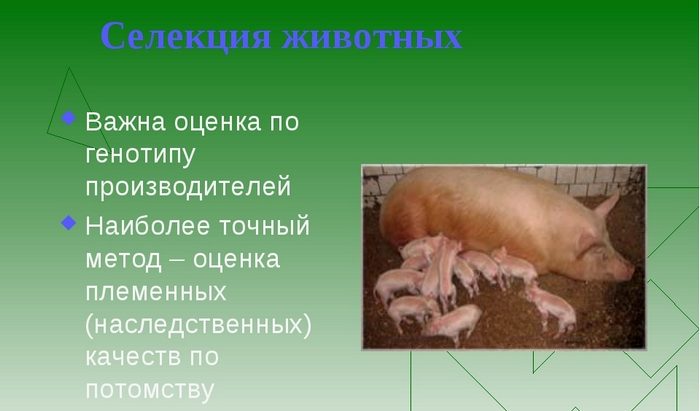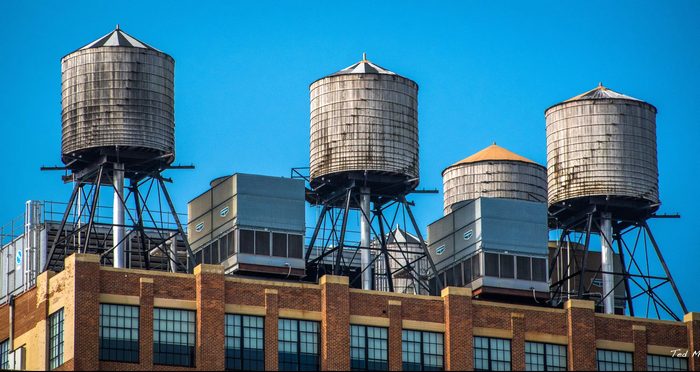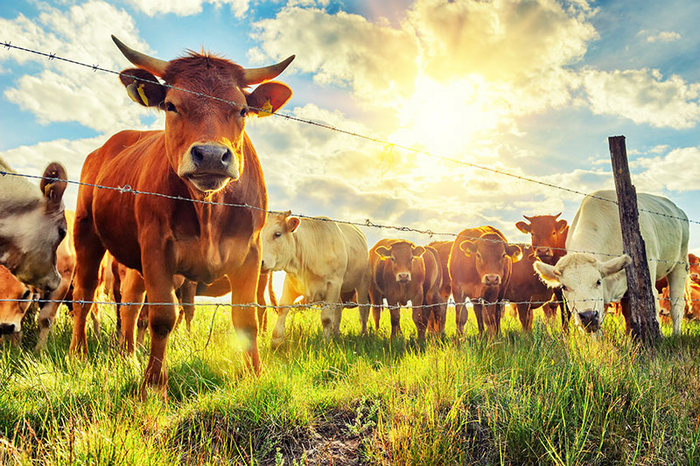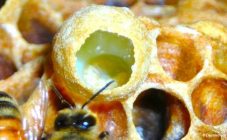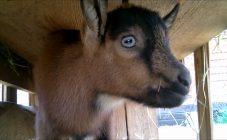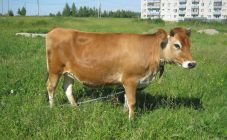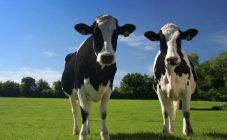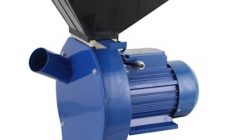Content:
- Livestock: what it is, the basics. What industries exist, what goals and objectives are set
- Unproductive animal husbandry
- Livestock production technology. Calculation of the cost of livestock products
- Dairy farming
- Hybridization in animal husbandry
- Absorption crossing in animal husbandry
- Genomic breeding in animal husbandry
- Livestock breeding
- Livestock equipment
- Livestock waste
- Index insurance in animal husbandry
- Computer program "Selex" in animal husbandry
- Livestock in Russia. Veterinary and sanitary condition of livestock industries
Livestock is the second important branch of agriculture after crop production. The financial situation of the country depends on its development. In modern times, the use of new technologies contributes to the fact that animal husbandry has begun to develop actively.
Livestock: what is it, the basics. What industries exist, what goals and objectives are set
Most of the gross output comes from animal husbandry. Milk, eggs, meat are the most important food products for the population. Thanks to industry, people get wool, leather. The development of livestock production allows the use of labor and material assets in any form throughout the year. In the work, plant waste is consumed, organic matter is formed - manure, slurry.
The main task of animal husbandry from the legislation is to improve the quality of products. This is achieved through selection, improving the technical equipment of farms, and motivating employees. Enterprises strive to increase productivity and head growth, increase production volumes with lower costs of funds and labor.
There are a great many agricultural individuals. Significant industries:
- Pig breeding. They get important goods - meat and lard.
- Horse breeding, in which individuals are bred in a breeding, productive and sporting way.
- Cattle breeding. Based on the cultivation of cattle. Cattle breeding is the main direction, thanks to which the population receives milk and meat. Small ruminants are also raised.
- Poultry keeping. The industry helps to provide citizens with eggs, meat, down, feathers.
- Fur farming - bred minks, polar foxes. In the process, skins are obtained to sew outerwear, shoes, accessories.
- Beekeeping. Get honey, wax, royal milk.
These are innovative areas. They also distinguish fish farming, reindeer husbandry and camel breeding.
Unproductive animal husbandry
This is an industry in which animals are not used for the purpose of obtaining products. Dogs, hamsters, and parrots are unproductive species. But on condition that they are not taken out in domestic livestock for the purpose of sale. Otherwise, unproductive animal husbandry will turn into productive one.
Livestock production technology. Calculation of the cost of livestock products
The goal of the technology is to obtain the least expensive but high quality products. This can be achieved through the interaction of different methods of production processes. All of them together represent economic, biological, technical, organizational indicators.
The production technology includes a whole range of interacting activities and methods of doing business.
The cost of livestock products includes the following types of expenses:
- stern;
- funds for the wages of workers;
- works and services;
- goods for the protection of animals;
- expenses for the maintenance of fixed assets;
- losses from slaughter of individuals;
- costs of organizational processes and production management, livestock products;
- other expenses.
In dairy production, the cost of 1 centner of milk and 1 head of cattle is calculated as follows: the cost of fertilizer and other products is deducted from the total cost. The rest is attributed to milk 90%, offspring - 10%.
The cost per 1 centner of the increase in cattle is calculated as follows: the amount of costs for the production of live weight is divided by the centner of the increase.
To calculate the cost of the weight of young animals and adults for fattening, the initial book value at the beginning of the year is summed up with the cost of the animals that were fed and reared, the offspring obtained and the costs related to the increase in live weight for the year. The total amount is divided by the amount of live weight at the end of the year and the weight of retired individuals.
Dairy farming
The industry generates considerable income for both farms and agricultural workers and entrepreneurs. Dairy products, which are obtained from different types of livestock, are used in industrial production and by small farmers.
Dairy farming aims to obtain milk and meat. Milk is an irreplaceable product that has no analogues. It is taken in pure form and used as raw material.
Milk should be present in the diet of adults and children. Products are always in demand, are in great demand among the population. Milk production affects the internal and external economy of Russia, it is actively consumed on farms.
The main distinguishing characteristic of dairy production is the continuous receipt of milk and providing it to the consumer.
Hybridization in animal husbandry
The concept means the mating of individuals that belong to different species and genera. From them, offspring are obtained, called hybrids. The purpose of this method is to attract valuable wild and semi-wild individuals.
There are 2 types of crossing:
- hybridization, its purpose is the production of useful animals;
- crossbreeding, in which new breeds and varieties of animals are developed.
The process itself consists of the fusion during fertilization of different sex cells by genotype and the formation of a new organism from the zygote, which will combine the hereditary features of the original individuals. The first hybrid generation produces animals with better adaptability and greater fertility.
The goals of crossbreeding in livestock farming are as follows:
- breeding of usable individuals;
- obtaining new breeds, including all the best properties of the parents;
- restoration and storage of some species of individuals.
In intraspecific crossing, animals of different breeds mate. With the help of interspecific hybridization, varieties, genera of individuals are obtained. But they are infertile. Interbreed allows you to breed crossbred or mixed breeds.
Absorption crossing in animal husbandry
This variety was invented by sheep breeders in the Middle Ages to transform coarse-wooled sheep into fine-wool sheep. The task of mating is to replace one breed with another. Individuals that are displaced are called upgraded. The breeds, thanks to which the absorption is carried out, are improving. They can be a primitive, factory or transitional breed.
This hybridization takes into account the bloodiness of individuals - the proportion of parental genes. Improving animals are assigned a score of 1, upgraded ones - 0.
In hatched individuals, the proportion of blood of the improving breed increases.The absorption of the genotype of the improved individual is observed.
It will take about 20 years to transform a low-yielding cattle herd into a thoroughbred herd. This method was used to bred the Irmenian species of black-and-white breed.
Genomic breeding in animal husbandry
This technology is used to increase the reliability of assessing the breeding significance of young individuals based on information about markers for the whole genome. What does it give:
- assessment of the producer animal from birth to the moment of offspring;
- obtaining information about pathologies;
- the ability to carry out precise breeding work.
With the help of selection, a number of traits can be effectively applied:
- with a low level of heredity;
- difficult to measure;
- taking a long time to evaluate;
- susceptibility to disease, reaction to antibiotics.
Genomic selection makes it possible to screen out individuals at an early age. The marriage is reduced several times.
Livestock breeding
The goal is to provide high-value animal breeds to user-based livestock. Farms also improve and improve their performance and produce more productive species. Livestock breeding in Russia contains:
- private breeding farms;
- loudspeakers;
- state-owned enterprises that are engaged in this type of activity.
To reproduce breeding animals, the farm must register and acquire a state license.
The number of livestock in dairy cattle breeding varies from 600 to 1200 units in one farm, in pig breeding from 300 to 600. Some breeding enterprises manage subsidiaries. There the number can reach several thousand.
Livestock equipment
In the dairy industry, one of the main biotechnologies is the milking machine. The principle is as follows: milk is sucked out of the udder using a rarefied vacuum, which is formed by a special pump. If necessary, the product is passed through a cream separator or pasteurizer to kill germs.
The water tower or air-water tank allows you to check the quality and level of water coming from mines and boreholes.
For transportation of feed, mechanized conveyors of belt, screw, scraper type are used. Enterprises need different equipment for grinding coarse and wet feed, crushing grain, washing root crops. Pneumatic mechanization helps to remove waste and manure.
An industrial manufacturer has produced machines for space heating and ventilation. These include: heat generators, boilers.
Livestock waste
These include manure and runoff from farms. There are the following types of processing:
- bedding, solid manure with a moisture content of 80%;
- litterless - semi-liquid, liquid;
- runoff - manure with water humidity over 93%.
Breeding cattle, chickens, pigs contains about 30% of nutrients - cellulose, lignin. All wastewaters extract 2.2 million tons of nitrogen, 1 million tons of phosphorus and potassium each. Cultivation of microorganisms in order to obtain fodder biological mass is a perspective in waste disposal.
Index insurance in animal husbandry
This type is an alternative to the usual insurance method. Payments are not based on an assessment of individual damage, but on the behavior of a specially developed index. For agriculture, 2 indices are used - the yield index and the weather index.
Computer program "Selex" in animal husbandry
The innovation was developed by Russian lamps for working with cattle. The program is necessary for breeding plants and large farms. The volumes of recorded and processed information allow it to be used in all types of activities. What can be done with "Selex":
- to form an electronic card index for all livestock;
- reduce the complexity of paper processing;
- significantly improve the accuracy of calculations;
- quickly receive the requested information;
- extract in-depth analysis for executives, zoologists, veterinarians, economists;
- record information coming from services;
- make a variety of calculations, make predictions that cannot be carried out with a manual method of data processing.
The most important thing that the program gives is the ability to manage the production process, to receive information from each structural unit.
Livestock in Russia. Veterinary and sanitary condition of livestock industries
Livestock raising in Russia during the years of Soviet power was a fairly developed industry. In the 1980s, cattle numbered 60 million heads, pigs - 40 million, goats and sheep - 65 million.A few years later, the number of cattle dropped to 28.5 million, pigs - to 17.5, sheep - 15.5 million
In the modern world, the industry remains the most important direction in agriculture. Base - cattle breeding. In the northern and central regions today, dairy individuals are grown, in the steppe - meat and meat, in most of the country - dairy and meat.
Sanitary processes are aimed at preventive measures, communication and elimination of diseases in animals, increasing the number of heads. This helps to produce clean products without risks to the health of consumers. The veterinary and sanitary state of the livestock industry in 2018 meets the necessary requirements.
Livestock raising is a sphere of economic life related to the maintenance, raising of livestock in order to obtain the necessary products and carry out their sale. Universities conduct education and training of specialists for the ability to competently conduct animal husbandry.
